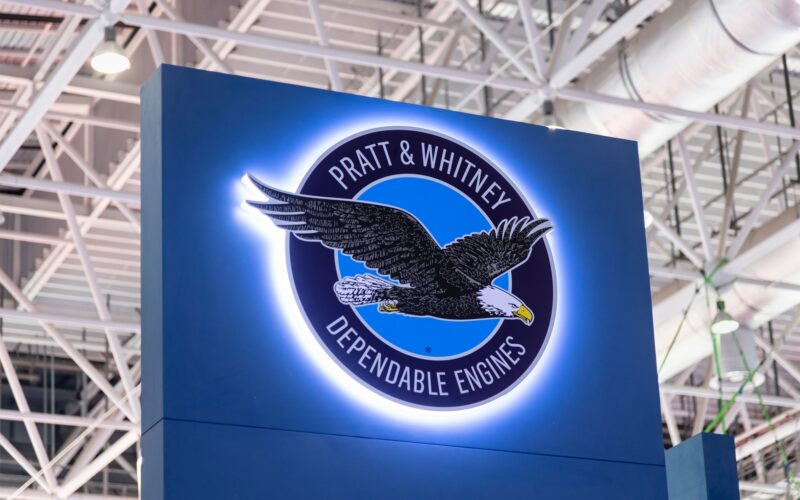The United States (US) Federal Aviation Administration (FAA) has published an Airworthiness Directive (AD) detailing the nature of inspections required for Pratt & Whitney PW1100G engines used on the Airbus A320neo family aircraft.
According to the FAA, the latest AD was issued after an Airbus A320neo experienced an engine shutdown, forcing the flight crew to abort a takeoff attempt in December 2022.
Subsequent analysis by Pratt & Whitney, which included a review of its records and a re-evaluation of its analysis methodology, resulted in the conclusion that high-pressure turbine (HPT) 1st-stage and 2nd-stage hubs were “susceptible to failure much earlier than previously determined”.
As such, the manufacturer issued an instruction to all PW1100G operators to conduct an ultrasonic inspection (USI) to detect cracks and prevent premature failures of the HPT 1st-stage and 2nd-stage hubs on August 4, 2023. These engines need to be removed by September 15, 2023, “due to the urgency of the safety of flight issue,” the FAA noted, as the “longer these parts remain in service, without the inspections required by this AD, the higher the probability of failure”.
The updated analysis also identified the same issue on PW1400G engines, which are used exclusively on the Irkut MC-21, a Russian-made aircraft that has since switched to a domestically made powerplant due to sanctions imposed on Russia following its unlawful invasion of Ukraine.
“This condition, if not addressed, could result in uncontained disk failure, release of high-energy debris, damage to the engine, damage to the airplane, and loss of the airplane,” the FAA directive read.
Series of engine failures
The FAA first addressed a failure related to the Airbus A320 aircraft family engine in March 2020 when an Airbus A321ceo, powered by the International Aero Engines (IAE) V2500 engine, experienced an uncontained HPT 1st-stage disk failure. This resulted in high-energy debris penetrating the engine cowling.
In response, the FAA issued an emergency AD in April 2020, while Pratt & Whitney found that the failure “was a result of a material anomaly attributed to deficiencies in the manufacturing process”.
Based on an analysis of the same event, the engine maker said it had “identified a different population of HPT 1st-stage disks and HPT 2nd-stage disks that are subject to the same unsafe condition identified” in the emergency AD. As a result, the FAA issued another directive in September 2021, requiring the removal of certain HPT 1st-stage and 2nd-stage disks on both the IAE V2500 and PW1100G engines.
However, Pratt & Whitney claimed to have found “another subpopulation of HPT 1st-stage disks and HPT 2nd-stage disks that, because of their susceptibility to the same material anomaly, require inspection and possible removal from service”, which prompted the FAA to issue another AD in October 2022. It required a USI of the two HPT disks on the IAE V2500 and PW1100G engines. If cracks were found, operators had to replace either one or both HPT 1st-stage or HPT 2nd-stage disks.
However, the incident in December 2022 forced Pratt & Whitney to go back to the drawing board once again and re-evaluate its engineering analysis methodology.
Immediate safety threat
The FAA will publish the latest AD on August 22, 2023, with the authority saying that the condition “requires the immediate adoption of this AD without providing an opportunity for public comments prior to adoption”.
Typically, the FAA publishes a notice of proposed rulemaking (NPRM), inviting stakeholders to comment on the proposed change.
“The FAA has found that the risk to the flying public justifies forgoing notice and comment prior to adoption of this rule,” the agency added, noting that the presence of the manufacturing anomalies on the two HPT disks discovered after the incident in December 2022 “indicates an immediate safety of flight problem”.
Still, in the US, there are only 20 engines affected by the directive. The FAA estimated that inspection of one HPT hub will take around 100 working hours for $85 per hour. Meanwhile, replacing either of the two hubs will cost airlines $171,085 per product ($85 labor, 171,000 parts) per engine.
Operators must perform the USIs within 30 days of the effective date of the directive, August 27, 2023.
IAE also holds the type certificate for the PW1100G and PW1400G engines, also known as the Geared Turbofan (GTF). Meanwhile, P&W holds the type certificates for the PW1500G and PW1900G, used exclusively on the Airbus A220 and Embraer E2 aircraft families, respectively.
During its Q2 2023 results presentation in July 2023, RTX, the parent company of Pratt & Whitney, disclosed that “a significant portion of the PW1100G engine fleet” would have to be removed and inspected faster than anticipated in the next 12 months.
The engine maker added that the accelerated inspections will need to be carried out “within the next nine to twelve months,” and around 200 engines will be removed for inspection by mid-September 2023.

